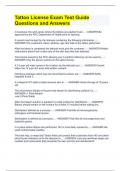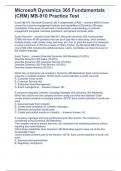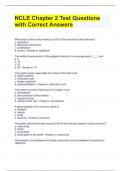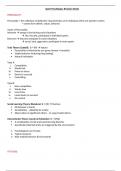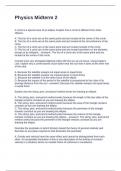Economics Chapter 14 Summary
‘Market structures I: Monopoly’
Imperfect competition
Imperfect competition – exists where firms are able to differentiate their product in some way and
so can have some influence over the price.
Market share – the proportion of total sales in a market accounted for by a particular firm.
Market power – where a firm is able to raise the price of its product and not lose all its sales to rivals.
Why monopolies arise
Monopoly – a firm that is the sole seller of a product without close substitutes.
Fundamental cause of monopoly: barriers to entry – anything which prevents a firm from entering a
market or industry.
Barriers to entry have 4 main sources:
• a key resource is owned by a single firm
• government gives a single firm the exclusive right to produce
• costs of production make a single producer more efficient than multiple producers
• a firm is able to gain control of other firms in the market, thus grow in size
Two important examples of how government creates a monopoly:
1. Patent – the right conferred on the owner to prevent anyone else making or using an invention or
manufacturing process without permission.
2. Copyright – the right of an individual or organisation to own thing they create in the same way as a
physical object to prevent others from copying or reproducing the creation.
Natural monopoly – a monopoly that arises because a single firm can supply a good or service to an
entire market at a smaller cost than could two or more firms.
How monopolies make production and pricing decisions
Competitive firm:
-
Monopoly:
- is the sole producer
- faces a downward-sloping demand curve
- is a price maker
- reduces price to increase sales
Monopoly’s revenue:
A monopolist’s marginal revenue is always less than the price of its good.
(Competitive firm, marginal revenue equals the price of its good)
When a monopoly increases the amount of it sells, it has 2 effects on total revenue (PxQ):
‘Market structures I: Monopoly’
Imperfect competition
Imperfect competition – exists where firms are able to differentiate their product in some way and
so can have some influence over the price.
Market share – the proportion of total sales in a market accounted for by a particular firm.
Market power – where a firm is able to raise the price of its product and not lose all its sales to rivals.
Why monopolies arise
Monopoly – a firm that is the sole seller of a product without close substitutes.
Fundamental cause of monopoly: barriers to entry – anything which prevents a firm from entering a
market or industry.
Barriers to entry have 4 main sources:
• a key resource is owned by a single firm
• government gives a single firm the exclusive right to produce
• costs of production make a single producer more efficient than multiple producers
• a firm is able to gain control of other firms in the market, thus grow in size
Two important examples of how government creates a monopoly:
1. Patent – the right conferred on the owner to prevent anyone else making or using an invention or
manufacturing process without permission.
2. Copyright – the right of an individual or organisation to own thing they create in the same way as a
physical object to prevent others from copying or reproducing the creation.
Natural monopoly – a monopoly that arises because a single firm can supply a good or service to an
entire market at a smaller cost than could two or more firms.
How monopolies make production and pricing decisions
Competitive firm:
-
Monopoly:
- is the sole producer
- faces a downward-sloping demand curve
- is a price maker
- reduces price to increase sales
Monopoly’s revenue:
A monopolist’s marginal revenue is always less than the price of its good.
(Competitive firm, marginal revenue equals the price of its good)
When a monopoly increases the amount of it sells, it has 2 effects on total revenue (PxQ):



